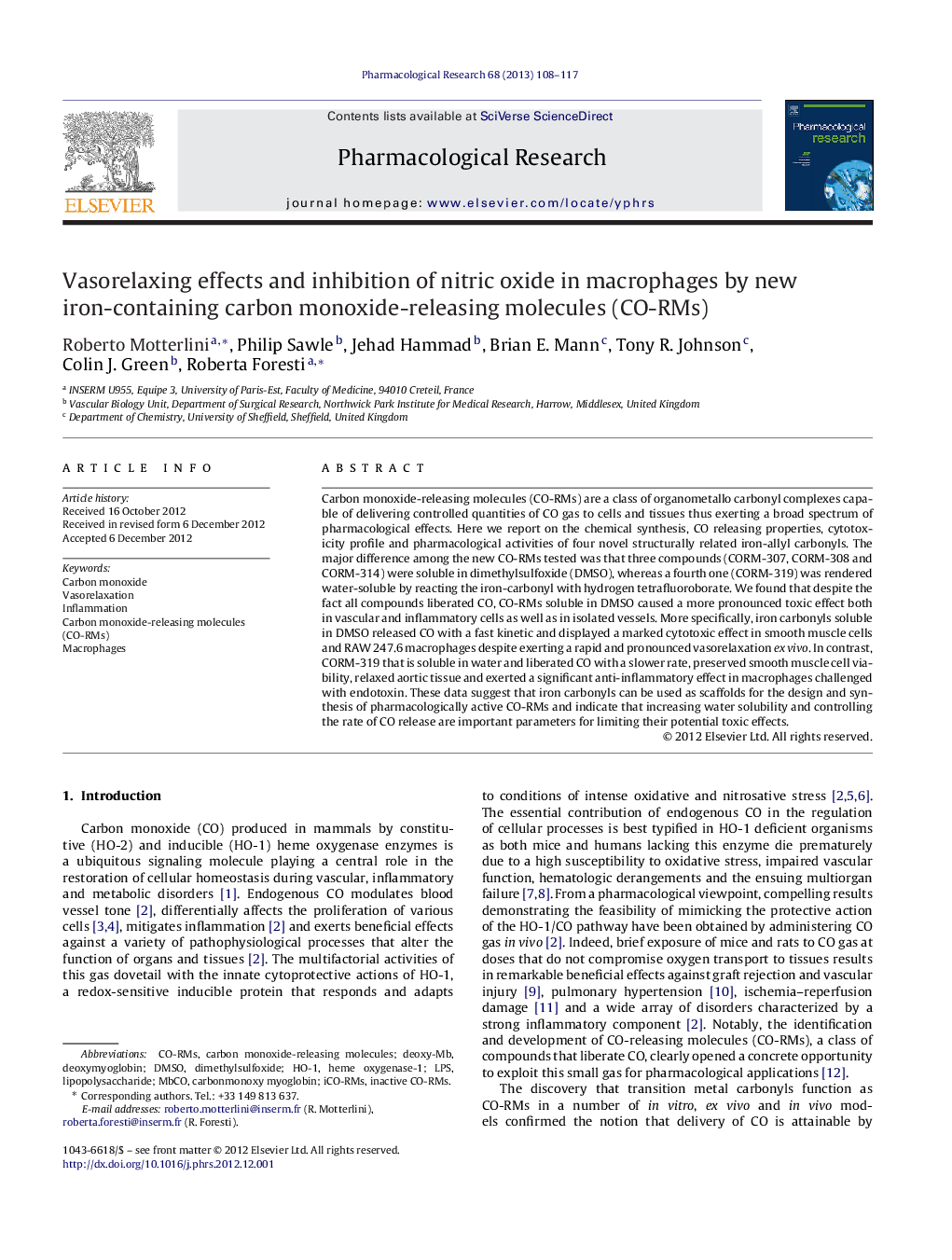| کد مقاله | کد نشریه | سال انتشار | مقاله انگلیسی | نسخه تمام متن |
|---|---|---|---|---|
| 2561387 | 1126908 | 2013 | 10 صفحه PDF | دانلود رایگان |

Carbon monoxide-releasing molecules (CO-RMs) are a class of organometallo carbonyl complexes capable of delivering controlled quantities of CO gas to cells and tissues thus exerting a broad spectrum of pharmacological effects. Here we report on the chemical synthesis, CO releasing properties, cytotoxicity profile and pharmacological activities of four novel structurally related iron-allyl carbonyls. The major difference among the new CO-RMs tested was that three compounds (CORM-307, CORM-308 and CORM-314) were soluble in dimethylsulfoxide (DMSO), whereas a fourth one (CORM-319) was rendered water-soluble by reacting the iron-carbonyl with hydrogen tetrafluoroborate. We found that despite the fact all compounds liberated CO, CO-RMs soluble in DMSO caused a more pronounced toxic effect both in vascular and inflammatory cells as well as in isolated vessels. More specifically, iron carbonyls soluble in DMSO released CO with a fast kinetic and displayed a marked cytotoxic effect in smooth muscle cells and RAW 247.6 macrophages despite exerting a rapid and pronounced vasorelaxation ex vivo. In contrast, CORM-319 that is soluble in water and liberated CO with a slower rate, preserved smooth muscle cell viability, relaxed aortic tissue and exerted a significant anti-inflammatory effect in macrophages challenged with endotoxin. These data suggest that iron carbonyls can be used as scaffolds for the design and synthesis of pharmacologically active CO-RMs and indicate that increasing water solubility and controlling the rate of CO release are important parameters for limiting their potential toxic effects.
Figure optionsDownload high-quality image (113 K)Download as PowerPoint slide
Journal: Pharmacological Research - Volume 68, Issue 1, February 2013, Pages 108–117